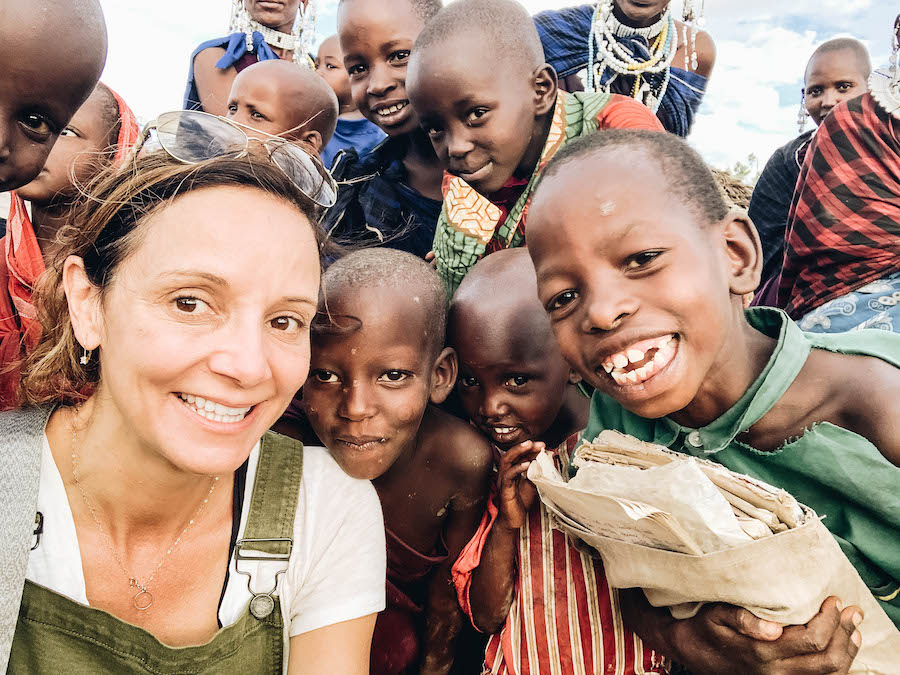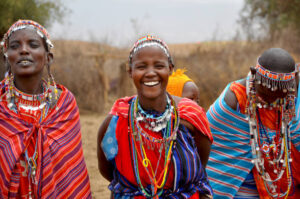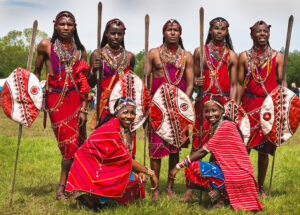- Overview
- Gallery
HISTORY
Kenya recognizes over fifty tribes of native people. The Maasai were the dominating tribe at beginning of 20th century. They are one of the very few tribes who have retained most of their traditions, lifestyle and lore. In common with the wildlife with which they co-exist, the Maasai need a lot of land. Unlike many other tribes in Kenya, the Maasai are semi-nomadic and pastoral: they live by herding cattle and goats.
The Maasai have not fared well in modern Africa. Until the European settlers arrived, fierce Maasai tribes occupied the most fertile lands. The Maasai struggled to preserve their territory, but their spears were no match for armed British troops, and their lawyers never had a fair chance in British courtrooms. In 1904, the Maasai signed a first agreement, losing the best of their land to the European settlers.
Seven years later, in 1911, a very controversial agreement was signed by a small group of Maasai, where their best Northern land (Laikipia) was given up to white settlers. Surely they did not fully understand what the consequences of such a treaty were, and anyway the signatories did not represent the entire tribe. With these two treaties, the Maasai lost about two-thirds of their lands and were relocated to less fertile parts of Kenya and Tanzania.
Other tribes of Kenya have adapted more readily to the “progress” of modern times. In contrast, the Maasai have persisted in their traditional ways, so as Kenya takes more land for growing tribes and agriculture, they suffer.
Traditional lifestyle and distinctive dress
The Maasai of northern Tanzania still live a largely traditional lifestyle, grazing their cattle over vast areas, and living in semi-permanent villages (manyattas) of huts ringed by a thorn fence as defence against wild animals.
Maasai men dress in a distinctive manner. They are usually draped in toga-like red or purple blankets, and often style their red ochred hair in a shape reminiscent of a Roman helmet. They almost invariably carry a long fighting stick wherever they go, and are also often armed with spears. Beadwork, traditionally undertaken by women, is an important facet of Maasai body decoration, and often used to indicate social status.
The importance of age-set
The central unit of Maasai society is the age-set. In their teens, Maasai males are initiated as a new age-set of moran (young warriors), and for the next 10 to 15 years their duty is to tend livestock and defend the clan. Strict taboos apply to this age-set, including a prohibition on marriage and alcohol until its members graduate to become eunoto (elders), usually around the age of 30.
The currency of cattle
The Maasai are staunch pastoralists, and every aspect of their lifestyle is informed by their relationship with their beloved cattle. Even today, wealth is measured in terms of cattle rather than money: broadly speaking, a herd of 50 cattle would be considered respectable, but a man who has plenty of cattle and few children will be thought of as poorly off.
A diet of cow's milk and blood
Traditionally, the Maasai will not eat vegetable matter or fish, and the flesh of wild beasts is forbidden, except for the cow-like eland and buffalo. However, because cows are more valuable alive than dead, they are seldom slaughtered, and then only for ceremonial purposes.
The traditional Maasai diet consists mainly of cow’s milk and blood, the latter drained – it is said painlessly – from a strategic nick in the animal’s jugular vein. The concoction is then allowed to curdle in a calabash before it is consumed. Meat and milk are never eaten on the same day, because it is regarded to be insulting to the cattle to feed off the living and the dead at the same time.




